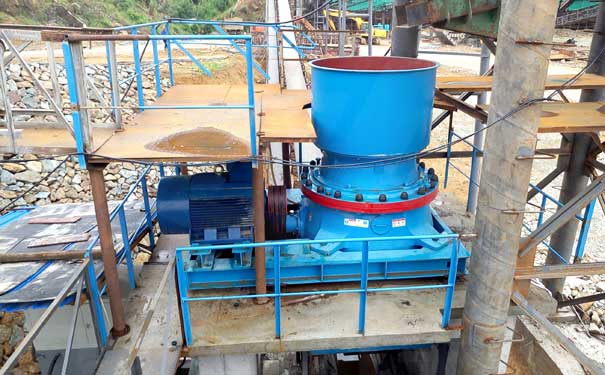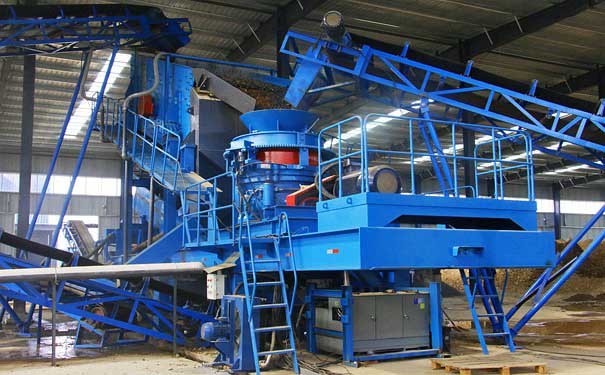The working environment of the cone crusher is bad, and some failures will inevitably occur. These failures not only affect the normal performance of the efficiency of the crusher, but also greatly reduce the service life of the parts and lubricating oil of the crusher, and the consumption of spare parts and materials has increased significantly, which increases the labor intensity of maintenance and production. Therefore, proper handling of these faults can ensure the stable operation of the cone crusher and improve production efficiency.

Common Faults and Cause Analysis of Cone Crusher
- The large and small bevel gears are worn and broken teeth.
- The oil quality of the lubricating oil has deteriorated.
- The crusher often vibrates.
- There is a violent impact sound, the support sleeve jumps up, and then it works normally.
- There is a cracking sound when crushing ore.
- The crusher vibrates strongly, and the moving cone rotates quickly.

13 ways to prevent and deal with faults
- Improve the assembly relationship between the large bevel gear and the eccentric shaft sleeve, so that the axis of the large bevel gear of the cone crusher after assembly deviates from the axis of the eccentric shaft sleeve by 2-2.3mm to the thin side.
- Install an electromagnetic separator, a metal detector and a video monitoring system on the belt conveyor, and remove the unbreakable objects in time before entering the crusher.
- The electrical control system is equipped with over-current protection. When the crusher is mixed with unbreakable materials or overloaded, the motor can automatically stop running to play a protective role.
- Regularly check the bevel gear meshing clearance, the matching clearance between the eccentric shaft sleeve and the frame bushing, and timely replace the eccentric shaft sleeve or frame bushing with excessive wear to ensure that the clearance is within the specified range.
- Regularly check the thickness of the thrust disc, and adjust the meshing gap of the large and small cone wheels of the cone crusher in time to ensure that the gap is within the specified range.
- Frequently check the drainage of the dust-proof device. If a large amount of dust enters the lubricating oil and the oil quality deteriorates rapidly, stop the machine and check the dust-proof device to find out the cause and eliminate it.
- Frequently check the operation of the oil pump, filter, cooler, valve and pipeline in the thin oil lubrication station, the oil quality and the oil pressure and temperature of the thin oil lubrication system.
- Regularly check the wear of the liner, the tightness of the fasteners, and timely tighten the bolts or refill the zinc alloy.
- The post operator must abide by the marking operation rules stipulated in the start-up and shutdown procedures of the crusher.
- During the operation of the crusher, attention must be paid to uniform feeding.
- Regularly check the wear of the spherical bearing, and replace the excessively worn spherical bearing in time.
- Check the oil level of the oil tank. If the amount of oil in the oil tank decreases, and the oil level drops significantly in severe cases, stop the machine and check it to find out the cause of the fault in time and deal with it accordingly.
- Regularly check the spring tightness of the crusher. When the spring tightness of the crusher is not enough, stop the machine and tighten the spring according to the specified range.
The correct operation and maintenance of the cone crusher, reducing the failure rate, ensuring the normal operation of the equipment, and maximizing the production efficiency are what every equipment manager expects.

